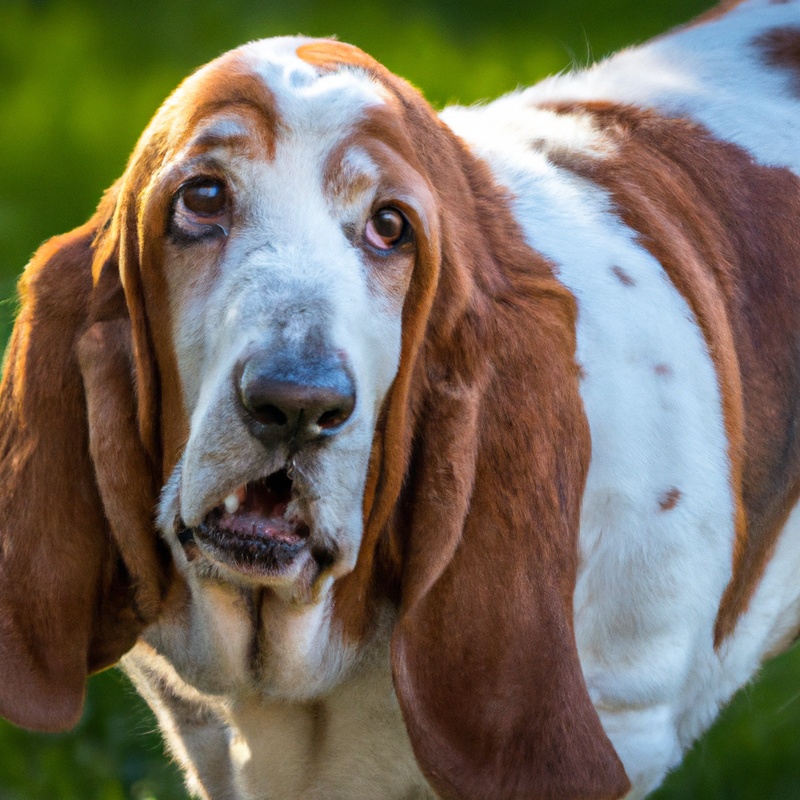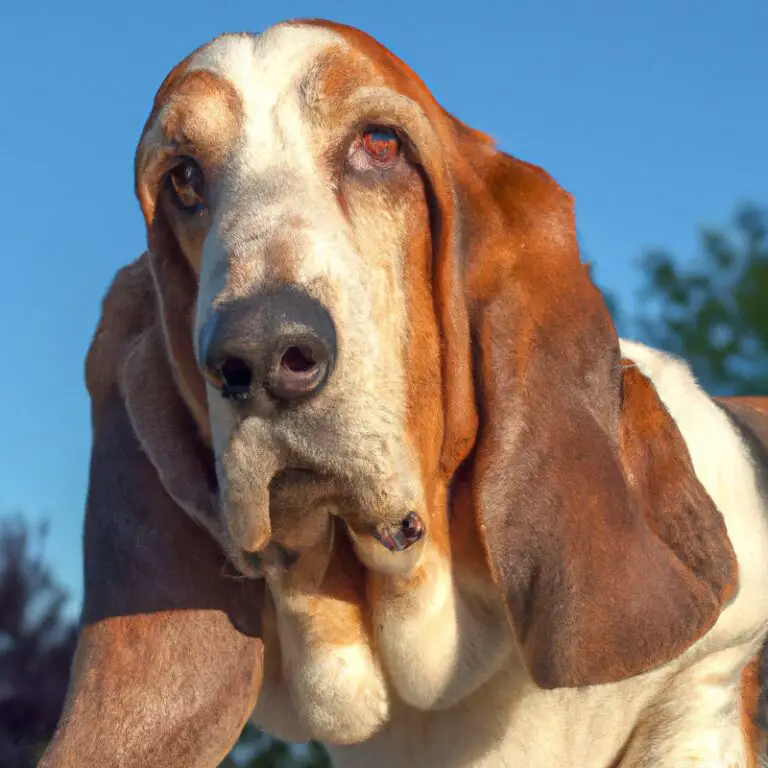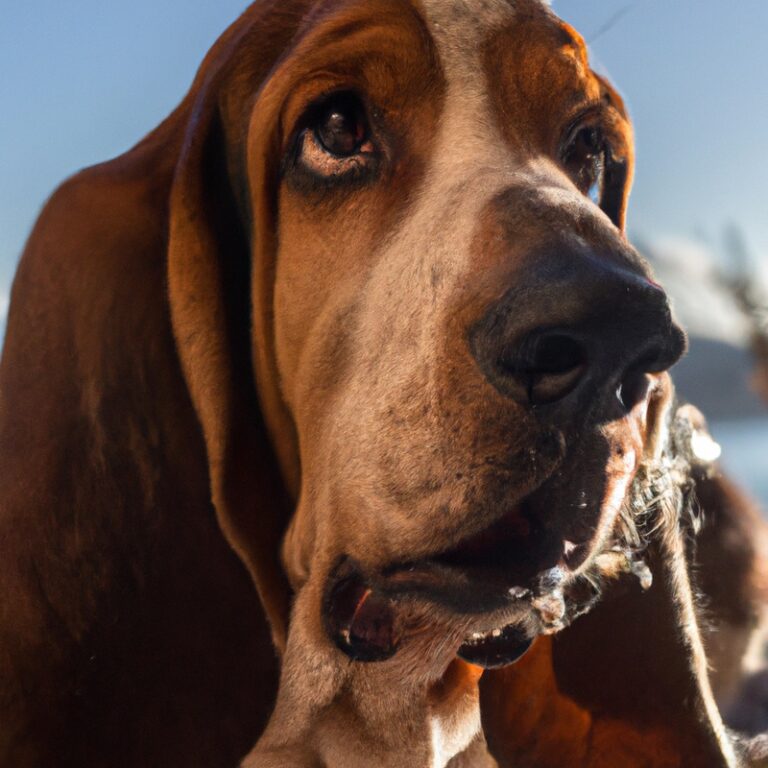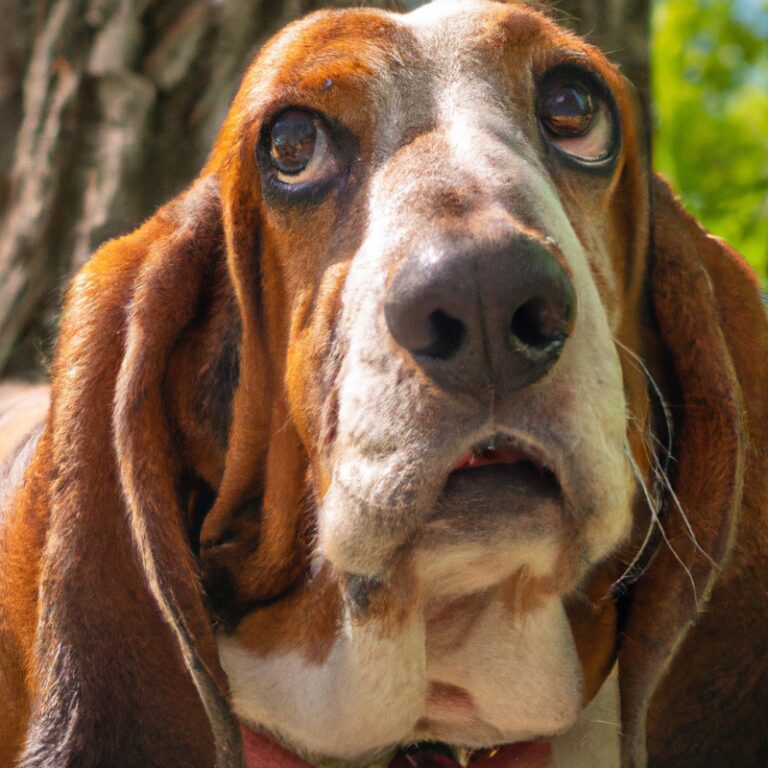What Are The Exercise Needs Of a Basset Hound With Limited Mobility?
Key Takeaways:
- Basset Hounds with limited mobility still require regular exercise to maintain a healthy weight and overall well-being.
- Low-impact exercises, such as swimming or short walks, are recommended for Basset Hounds with limited mobility.
- Mental stimulation through puzzle toys or training activities is important for Basset Hounds with limited mobility.
- It’s crucial to consult with a veterinarian to create an exercise plan tailored to the specific needs of a Basset Hound with limited mobility.
Hey there, fellow dog lovers! If you’re a proud owner of a Basset Hound with limited mobility, you know how important it is to keep your furry friend happy and healthy.
But what are the exercise needs of these adorable droopy-eared pups?
Join me as we dive into the world of Basset Hounds and explore the factors that influence their mobility.
We’ll also uncover ways to tailor exercise routines to accommodate their limited mobility, and discover additional care and considerations to keep them thriving.
Get ready to wag those tails and let’s get started!
| Exercise Needs | Description |
| Low-impact activities | Basset Hounds with limited mobility require exercises that are gentle on their joints. Low-impact activities like walking on a soft surface, swimming, or hydrotherapy can help keep them active and prevent weight gain. |
| Moderate exercise | Short walks or play sessions can provide mental stimulation and help maintain muscle tone. Be cautious not to overexert the Basset Hound and gradually increase the duration or intensity of exercise. |
| Avoid strenuous activities | Avoid high-impact exercises, jumping, or activities that require rapid movements. Basset Hounds are prone to back problems, so care must be taken to prevent injury. |
| Supervised exercise | Always supervise the Basset Hound during exercise to ensure they don’t strain themselves or wander off. Keep them on a leash or in a secure area. |
| Veterinary guidance | Consult with a veterinarian or a canine rehabilitation specialist to tailor an exercise plan that suits the individual needs and limitations of the Basset Hound. |
Understanding Basset Hounds and their Exercise Needs
Exploring Basset Hounds’ Physical Characteristics
Basset Hounds are known for their unique physical characteristics.
They have long bodies, short legs, and droopy ears that are adorable to many.
Their large, expressive eyes and wrinkled skin give them a distinctive appearance.
Bassets also have a strong sense of smell, thanks to their long, broad noses.
Their coats are short and dense, which makes grooming relatively easy.
These physical traits contribute to their charm and make them easily recognizable.

Importance of Exercise for Basset Hounds with Limited Mobility
Exercise is important for Basset Hounds with limited mobility because it helps maintain their overall health and wellbeing.
Regular physical activity can prevent weight gain, strengthen muscles, and improve joint flexibility.
It also provides mental stimulation, reducing boredom and behavioral issues.
Low-impact exercises like walking, hydrotherapy, and controlled playtime are suitable for these dogs.
Developing a routine that includes exercise tailored to their abilities is essential.
Monitoring their tolerance and adjusting the intensity as needed is crucial for their safety and comfort.
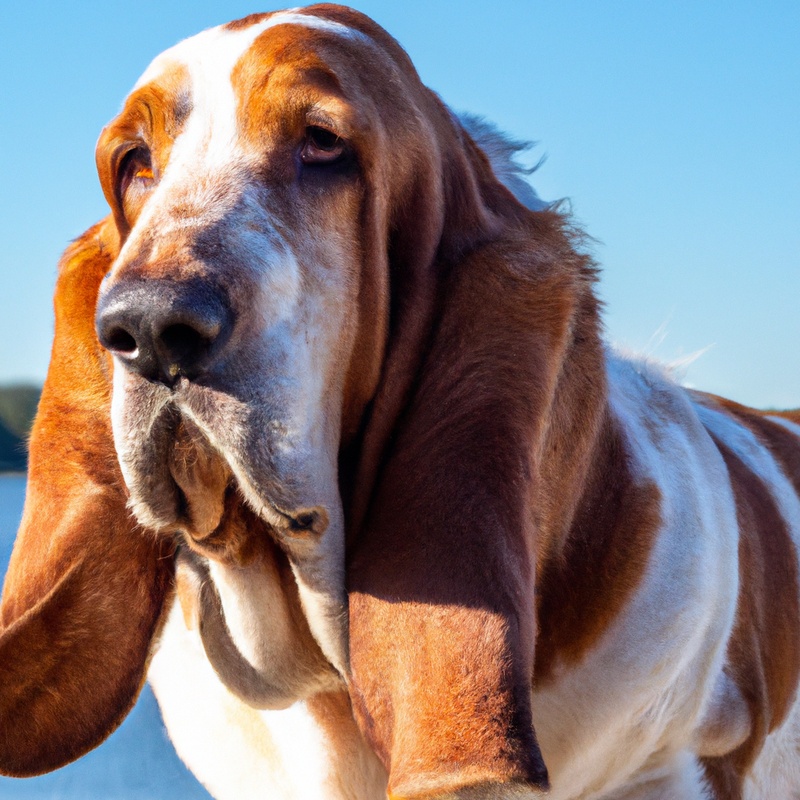
Factors Influencing Basset Hounds’ Mobility
Age and Health Conditions of Basset Hounds
Basset Hounds, like all dogs, experience changes in mobility as they age. Elderly Bassets may develop arthritis or other health conditions that can impact their ability to move comfortably.
It’s important to monitor their weight and body condition to prevent further strain on their joints.
Regular veterinary check-ups can help identify and manage any health issues. Adjusting exercise routines and providing supportive accessories, such as orthopedic beds and harnesses, can also improve their overall mobility and quality of life.
Impact of Weight and Body Condition on Mobility
The weight and body condition of a Basset Hound can greatly impact their mobility. Basset Hounds are prone to obesity, which can put excessive strain on their joints and make it difficult for them to move comfortably.
Maintaining a healthy weight is crucial for their overall well-being and mobility.
Additionally, proper exercise and a balanced diet are important in managing their weight and improving their mobility. Regular monitoring and proactive measures can help ensure that Basset Hounds with limited mobility can live happy and active lives.
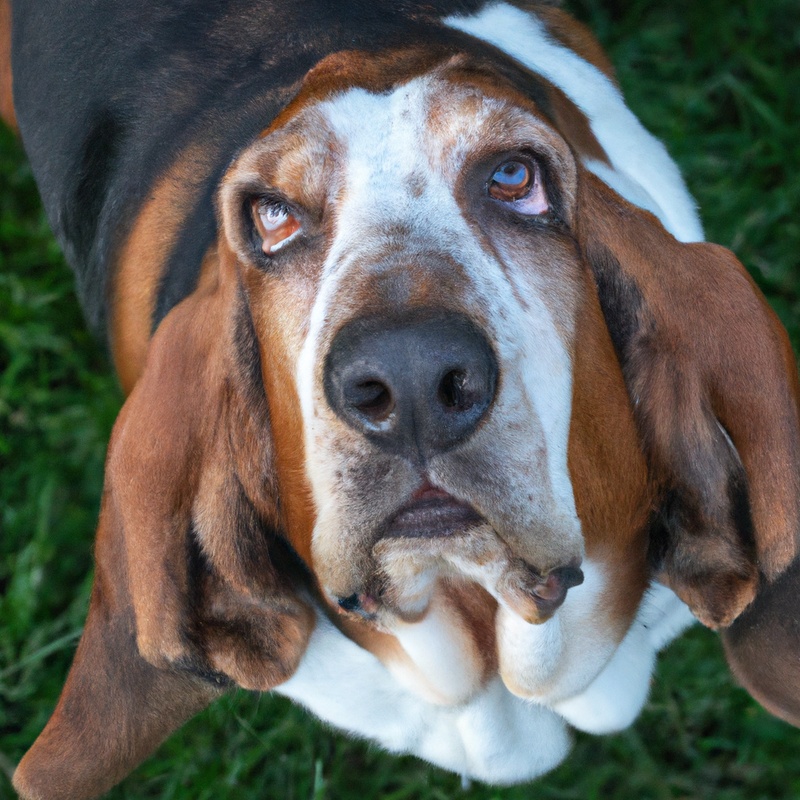
Behavior and Temperament in Relation to Mobility
A Basset Hound’s behavior and temperament can have an impact on their mobility.
Their calm and laid-back nature may make them less inclined to engage in high-energy activities.
However, it’s important to assess their individual needs and provide appropriate exercise to prevent weight gain and maintain muscle strength.
Low-impact exercises, such as walking or hydrotherapy, can be beneficial.
Regular observation of their exercise tolerance and adjustment as necessary is key.
Additionally, monitoring their weight and consulting a veterinarian for proper dietary management is crucial for their overall health and mobility.
Tailoring Exercise for Basset Hounds with Limited Mobility
Low-Impact Exercises for Basset Hounds
Low-impact exercises are a great option for Basset Hounds with limited mobility.
These exercises provide gentle movement without putting too much strain on their joints.
Some examples include walking and gentle strolling, which allow them to explore their surroundings at a comfortable pace.
Hydrotherapy and swimming are also beneficial, as the water provides resistance while supporting their body weight.
Controlled playtime and mental stimulation activities, such as puzzle toys or scent games, can help keep their minds engaged.
It’s important to gradually increase exercise duration and frequency, while monitoring their tolerance and adjusting as needed.
Walking and Gentle Strolling
Walking and gentle strolling are excellent low-impact exercises for Basset Hounds with limited mobility. These activities help maintain their muscle tone, joint flexibility, and overall cardiovascular health.
To ensure a safe and enjoyable walk, consider using a harness or sling for support.
Start with shorter distances and gradually increase as your dog becomes more comfortable. It’s important to monitor their energy levels and adjust the duration and frequency of walks accordingly.
Remember to provide plenty of breaks and always carry water for hydration during longer walks.
Hydrotherapy and Swimming
Hydrotherapy and swimming can be beneficial for Basset Hounds with limited mobility.
These exercises provide low-impact options that are easier on their joints and help build strength.
Hydrotherapy involves exercising in water, which provides buoyancy and reduces stress on their bodies.
Swimming allows for a full range of motion and promotes cardiovascular fitness.
It is important to ensure safety and provide supervision during these activities.
Consult with a professional to determine the best exercises and duration for your Basset Hound’s specific needs.
Controlled Playtime and Mental Stimulation
Controlled playtime and mental stimulation are essential for Basset Hounds with limited mobility.
Engaging in activities that challenge their minds helps keep them mentally sharp and prevents boredom.
Puzzle toys, treat-dispensing toys, and nose work games are great options.
Additionally, controlled play sessions allow them to get some exercise without putting strain on their joints.
Moderate play with interactive toys or short walks can help keep them active and prevent weight gain.
Exercise Duration and Frequency
Exercise duration and frequency are important factors to consider for Basset Hounds with limited mobility.
It is crucial to develop a routine that caters to their specific needs.
Balancing exercise and rest is key to maintaining optimal health.
Start with low-impact exercises like walking or gentle strolling.
Consider incorporating hydrotherapy or swimming for added benefits.
Controlled playtime and mental stimulation are also great options.
Monitor your dog’s exercise tolerance and adjust as needed.
By finding the right balance, you can ensure your Basset Hound stays active and healthy.
Developing a Routine to Cater to Limited Mobility
Developing a routine for a Basset Hound with limited mobility is essential for their overall well-being. To cater to their needs, consider incorporating low-impact exercises like walking, hydrotherapy, and controlled playtime.
It’s important to balance exercise and rest, monitor their tolerance, and adjust as needed.
Additionally, focus on dietary considerations for weight management, provide supportive accessories, and ensure regular veterinary check-ups for pain management. By establishing a tailored routine, you can help your Basset Hound maintain a healthy and fulfilling lifestyle.
Balancing Exercise and Rest for Optimal Health
To ensure optimal health for your Basset Hound with limited mobility, it’s essential to strike a balance between exercise and rest.
Regular exercise helps to maintain muscle tone and joint mobility, while rest helps in recovery and prevents overexertion.
Keep exercise sessions low-impact, such as gentle walks or hydrotherapy.
Gradually increase the duration and intensity based on your dog’s tolerance.
Monitor your Basset Hound’s energy levels and adjust the exercise routine accordingly.
It’s crucial to consult your veterinarian for guidance on developing an exercise and rest routine that suits your dog’s specific needs.
Monitoring Exercise Tolerance and Adjusting as Needed
Monitoring exercise tolerance is vital for Basset Hounds with limited mobility.
I recommend observing their behavior during and after each session.
If your dog shows signs of fatigue, difficulty breathing, or discomfort, it’s essential to adjust the exercise intensity or duration accordingly.
Pay attention to any changes in their mobility or pain levels as well.
Regularly monitoring their tolerance allows you to create a suitable exercise routine that promotes their health and well-being.
Consulting with a veterinarian can provide further guidance in modifying exercises as needed.
Additional Care and Considerations for Basset Hounds with Limited Mobility
Dietary Considerations for Weight Management
For Basset Hounds with limited mobility, weight management is essential.
Here are some key dietary considerations to help manage their weight effectively:
- Consulting a veterinarian: Seek guidance from a veterinarian to create a specialized diet plan tailored to your Basset Hound’s needs.
- Balanced nutrition: Provide a well-balanced diet rich in lean proteins, healthy fats, and high-quality carbohydrates to support overall health.
- Avoid overfeeding: Be mindful of portion sizes and avoid overfeeding, as excess weight can exacerbate mobility issues.
- Regular feeding schedule: Establish a regular feeding schedule and avoid free-feeding to maintain portion control.
Remember, proper nutrition is crucial for managing weight and ensuring your Basset Hound’s overall well-being.
Consulting a Veterinarian for Specialized Diet Plans
When it comes to specialized diet plans for your Basset Hound with limited mobility, consulting a veterinarian is crucial. They can assess your dog’s specific needs, taking into account factors like weight, age, and any health conditions.
A veterinarian will help you develop a tailored diet plan that supports weight management and overall health.
They may recommend specific dog food formulated for weight loss or joint support. Remember, a veterinarian’s guidance is invaluable for ensuring your Basset Hound gets the nutrients they need while maintaining a healthy weight.
Avoiding Overfeeding and Providing Balanced Nutrition
To help maintain a healthy weight and support mobility in your Basset Hound, it’s important to avoid overfeeding and provide balanced nutrition.
This means serving them the appropriate portion sizes based on their age, weight, and activity level.
Consider consulting with your veterinarian to determine the right type and amount of food for your Basset Hound.
Additionally, opt for high-quality, balanced dog food brands that provide essential nutrients without excessive calories.
Be mindful of treats and table scraps; moderation is key.
By providing a balanced diet, you can promote optimal health and manage weight effectively.
Providing Supportive Accessories and Equipment
When it comes to supporting the mobility of Basset Hounds with limited mobility, there are various accessories and equipment that can make a difference.
- Orthopedic beds provide comfort and support for their joints and help alleviate pain.
- Consider providing comfortable resting spots throughout the house so that they can take breaks when needed.
- Harnesses or slings can assist in mobility by providing support and stability during walks or when going up and down stairs.
- It is important to prioritize the comfort and safety of your Basset Hound and provide them with the necessary tools to navigate their environment with ease.
Orthopedic Beds and Comfortable Resting Spots
Creating a comfortable resting spot for your Basset Hound is essential for their overall well-being.
Orthopedic beds are a great option as they provide extra support for their joints and spine.
Look for beds with memory foam or supportive padding to alleviate pressure points.
Also, consider providing additional comfortable resting spots throughout your home, such as cozy blankets or rugs.
By providing these comfortable spots, you can ensure your Basset Hound has a cozy and restful space to relax and recharge.
Assisting Mobility with Harnesses or Slings
Assisting a Basset Hound’s mobility can be made easier with the use of harnesses or slings.
These accessories provide support and stability, helping the dog to move around more comfortably.
Harnesses distribute weight evenly, reducing strain on the dog’s body.
Slings can be used to provide additional support to the hindquarters, allowing the dog to walk with assistance.
It’s important to choose the right size and fit for the harness or sling, ensuring maximum comfort and effectiveness.
Consulting with a veterinarian or professional dog trainer can help in selecting the most suitable option for your Basset Hound’s specific needs.
Regular Veterinary Check-ups and Pain Management
Regular veterinary check-ups are essential for basset hounds with limited mobility. These check-ups allow the veterinarian to monitor any changes in their mobility challenges and overall health.
During these visits, the vet can also prescribe appropriate pain management strategies to enhance their comfort.
This may include medications, physical therapy, or alternative treatments. By working closely with a veterinarian, you can ensure that your basset hound receives the necessary care and support to manage their mobility issues effectively.
Working with a Veterinarian to Monitor Mobility Challenges
When it comes to managing mobility challenges in your Basset Hound, working closely with a veterinarian is essential.
A veterinarian can provide expert guidance and monitor your dog’s condition over time.
They can help assess the severity of the mobility limitations and develop a personalized plan for your Basset Hound’s care.
Regular check-ups and mobility assessments will help track any changes in your dog’s condition, and adjustments can be made accordingly.
By collaborating with a veterinarian, you can ensure that your Basset Hound’s mobility challenges are properly monitored and managed.
Exploring Pain Relief Options for Enhanced Comfort
If your Basset Hound is experiencing limited mobility and discomfort, exploring pain relief options is essential for their enhanced comfort.
Consult with a veterinarian to determine the best options for your furry friend.
They may recommend non-steroidal anti-inflammatory drugs (NSAIDs) or other medications to alleviate pain and reduce inflammation.
Additionally, physical therapy, acupuncture, and chiropractic care can provide relief.
Remember to follow the veterinarian’s guidance and monitor your Basset Hound’s response to the chosen pain relief options.
Final Verdict
Basset Hounds with limited mobility require tailored exercise routines to maintain their overall well-being.
Understanding their physical characteristics, such as their elongated bodies and predisposition to certain health conditions, is crucial.
Low-impact exercises like walking and hydrotherapy can provide much-needed exercise while minimizing stress on their joints.
Additionally, monitoring weight, developing a routine, and providing supportive accessories are important considerations.
Regular veterinary check-ups and pain management strategies are also essential.
By addressing their specific needs, we can ensure that Basset Hounds with limited mobility lead happy and healthy lives.

